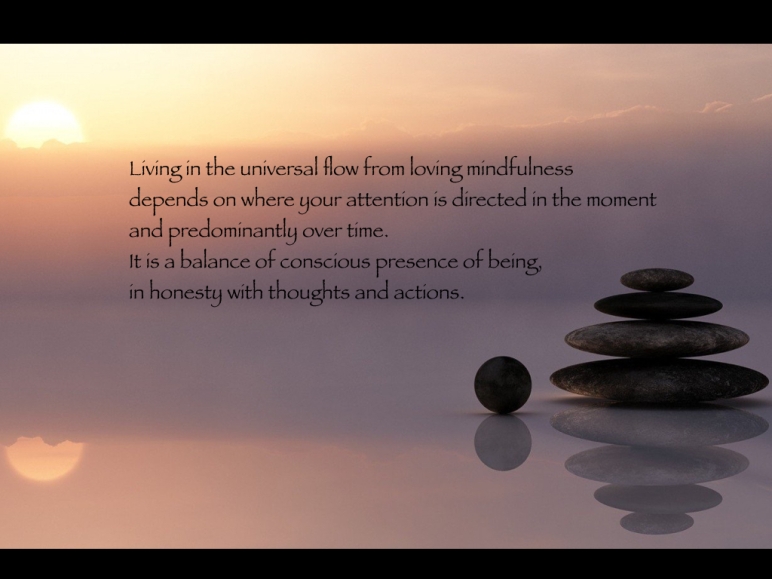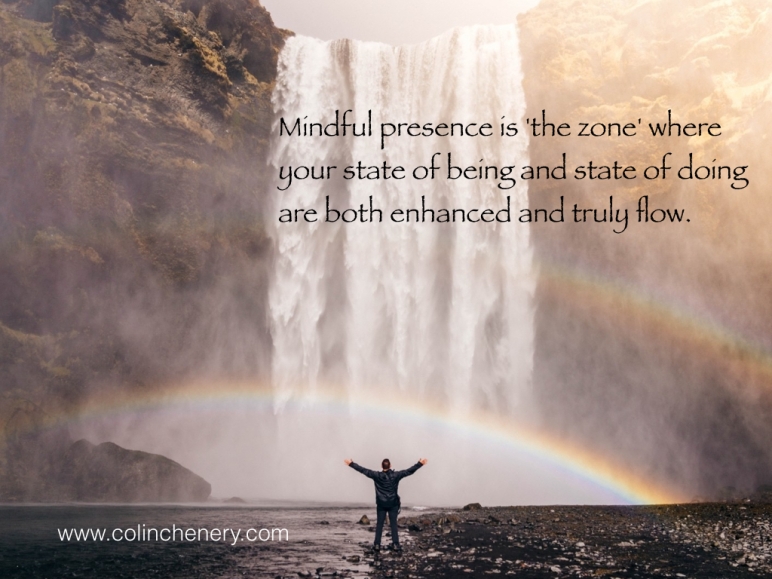As a mindfulness coach and counsellor practicing a range of mindfulness-based therapies, I am very interested in development and research of a holistic and integrative model of consciousness, experience, psychology and physiology. Where these all meet and interact is fascinating and greater understanding helps greater self-awareness.
Mind and body awareness has an impact on how we perceive things, how we deal with emotions (including emotional and physical pain or pleasure), our predisposition to certain moods and emotional states and can assist with various physical, mental and emotional ailments.
This article explores a little about our body intelligence. In particular, we’ll look at the gut and heart.
Body Intelligence and Three Brains
Studies reveal a physiological and scientific basis for the heart and gut in mental and emotional experience, along with mental and emotional balance or imbalance. This not only gives knowledge and awareness of our relationship to our mind and body relationship, but also validates mind-body practices and relating to our personal physiology as an extension of consciousness and life experience in the world.
Cranial brain, heart and gut (and to a lesser degree various other organs) have interconnected neural networks that process information more than purely physiological information. They work together with many messages transferred between them, impacting many systems, as well as directly to and from the Central Nervous System (CNS).
The complexity of this relationship on body function, as well as consciousness, perception and mood or emotional states is in its early stages of scientific research. Nonetheless, many studies point to growing evidence that many conscious and emotional responses come from processing in the entire system, and not exclusively in the brain.
The main physical structures involved in the overall body intelligence seem to be the Enteric Nervous System (ENS), which is intrinsic to the gastrointestinal tract [1], the Vagus Nerve (a major nerve supplying parasympathetic and autonomous fibres throughout all key organs, except the adrenals), cardio vascular ganglia and the Heart, the Anterior Cingulate Cortex (the main part of the cranial brain where emotional processing occurs) [2], frontal lobe responses and interoception, (the nervous system allowing us to have inner body awareness in terms of body feelings, positioning and effort exerted).
The Gut
A key relationship emerging in gastroenterology connects digestive and GI (Gastrointestinal) disorders to a reciprocal relationship between the brain and gut, including emotional disposition. [3]
There are a million or so neurons (brain cells) in our gut, more than in the spinal chord [4]. They play a part in the endocrine system (hormones) and mood elevating hormones like serotonin, which also assists in the regeneration or growth of new GI neurons [5].
The interplay of the various brain structures throughout our body contribute to what is known as homeostatic emotions [6,7]. Typical visceral emotions include hunger, thirst, satiation, the urge to evacuate waste and urgency. Other sensations include temperature, itch, muscle ache and pain. Most pain is unpleasant and leads to corrective drives to ease it. Some pain is pleasant if it relieves another unpleasant sensation. All of these also involve emotional and psychological processes.
Homeostasis is an integrated and dynamic process involving conditions like arousal, mood and affect and often involves an emotional response. In humans this has developed into an elaborated consciousness and forebrain response. An example is awareness of the state of the digestion in response to abdominal sensations. Other obvious examples of physiological and psychological responses interacting are sexual arousal from the genitals, or a sense of urgency ‘to go’ from anal discomfort.
The ENS, the gut microbia constitution, and other systems are increasingly established to be part of neurological disorders ranging from epilepsy and migraines [8] to depression and anxiety [9]. Balancing microbiome in the gut and dealing with digestive issues can relieve various physiological and emotional disorders. There is growing evidence microbiome in the gut impact brain development and structure, are part of adaptive and healthy functions, such as gut instinct and a range of emotional responses, such as response to fear [10].
The Heart
It is common to hear about “heart felt feelings’ and ‘thinking from the heart’. This usually refers to some expression or urge inspired by love, feelings of warmth, and a sense of wholeness. If ‘the heart is not in it’ , then it generally means someone is disengaged despite behavioural involvement and cognitive intent.
In a review of research summarised below, Professor Mohamed Omar Salem [11] refers to the hearts capacity to impact perception and reaction through its communications to the brain, as well as inhibit or facilitate brain activity. Since the early nineties, the complexity and mass of the hearts nervous system has been increasingly understood as a ‘little brain’ enabling it to act independently of the cranial brain.
40,000 heart neurons send information to higher centres in the brain including those processing emotion and cognitive processes. The heart also significantly affects the amygdala, associated with behavioural, immunological, and neuroendocrine responses to environmental threats.
The heart is the greatest generator of electromagnetic energy in the body, and contributor to the body’s electromagnetic field that extends several feet from the body. The field provides a global synchronising signal for the body. In addition, other individuals will synchronise coherence or incoherence in their energetic interactions, creating a group phenomenon.
The field is also attributed to research on the hearts involvement on processing and decoding intuitive information. Research indicating the heart appears to receive information, such as about a future event, before the brain.
The heart also acts as an endocrine gland, producing:
- Oxytocin, the ‘love’ or bonding hormone, significantly involved in childbirth and lactation, “cognition, tolerance, adaptation, complex sexual and maternal behaviours, learning social cues and establishing enduring bonding”. The brain and heart can have similar concentrations of oxytocin. Also,
- Atrial Natriuretic Factor (ANF) which impacts blood vessels, kidneys, adrenal glands and regulatory regions of the brain,
- Noradrenaline and dopamine neurotransmitters via Intrinsic Cardiac Adrenergic (ICA) cells, once thought to only be in the CNS. These neurotransmitters are important to pain/reward, mood and other psychological processes as well as many significant physiological processes.
The above information is but a brief look at the scientific basis for demonstrating the body as integrated system for experience, cognition and interaction beyond and inclusive of the brain. Physiological and psychological processes impact each other and beneficial processes associated with meditation and mindfulness utilise this.
So send an appreciative smile to your heart and gut for the ongoing support they give, with an intentional sense of loving wellbeing into your whole body. It makes a difference! Check in with what the heart and gut are saying to you for your health and wellbeing.
- Enteric Nervous System, (Scholarpedia, 2[10]:4064), John B Furness (2007) http://www.scholarpedia.org/article/Enteric_nervous_system
- “Gut Reactions: A Perceptual Theory of Emotion, Jesse J. Prinz, (Oxford University Press), 12 August, 2004.
- “Neuroimaging of the Brain-Gut Axis: From Basic Understanding to Treatment of Functional GI Disorders”, (Gastroenterology 2006;131:1925–1942), Mayer, Naliboff, Bud Craig,
- “The Enteric Nervous System”, (Neuroscience, 2nd Edition), Purves, Augustine, Fitzpatrick, et al., (Sinauer Associates), 2001. https://www.ncbi.nlm.nih.gov/books/NBK11097/
- “Not Only Does Our Gut Have Brain Cells, It Can Also Grow New Ones, Study (Medical News Today), Paddock, Ph.D. (August 5, 2009).
- Craig AD. An ascending general homeostatic afferent pathway originating in lamina I. Prog Brain Res 1996;107:225–242. 2.
- Craig AD. How do you feel? Interoception: The sense of the physiological condition of the body. Nat Rev Neuroscience 2002;3: 655–666
- The Abdominal Brain and Enteric Nervous System, (Meridian Institute) McMillin, Douglas, Richards, et al., 1999. https://www.meridianinstitute.com/ceu/ceu12abd.html
- Gut microbiome and depression: what we know and what we need to know (Neuroscience Review) Winter, Hart Charlesworth and Sharpley, 2017. PMID: 29397391,
- IFL Science; https://www.iflscience.com/health-and-medicine/gut-microbes-strongly-influence-emotional-behaviors/
- The Heart, Mind and Spirit, (Royal College of Psychiatry, UK), Professor Mohamed Omar Salem, 2007. http://www.rcpsych.ac.uk/pdf/Heart, Mind and Spirit Mohamed Salem.pdf








